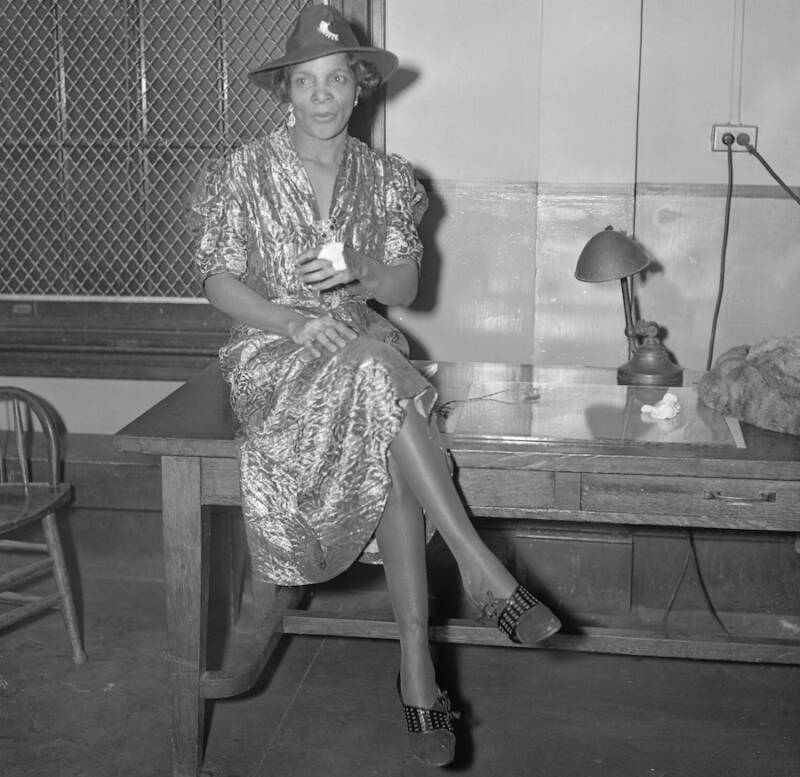In the 1920s, Stephanie St. Clair built a gambling empire in Harlem — and left an unforgettable mark on New York City history.
In the early 20th century, gangsters and racketeers ruled New York City. Amidst the Irish and Italian gangs rose Stephanie St. Clair, a Black woman who became a racketeer and an activist in equal measure.
At a time when Black women were deemed second-class citizens, St. Clair went toe-to-toe with some of the most notorious gangsters in history to carve out a piece of Harlem’s rackets for herself. And after she built a fortune, she spent much of her time advocating against Mafia control, government corruption, and police brutality against African Americans.
This is the remarkable true story of Stephanie St. Clair.
The Early Years Of Stephanie St. Clair

Bettmann/Contributor/Getty ImagesAt a time when the streets were ruled by men, Stephanie St. Clair became the “Numbers Queen” of Harlem.
The early life of Stephanie St. Clair (or Stephanie Saint-Clair) is largely shrouded in mystery. But it’s believed that she was born in the West Indies on December 24, 1897. Some sources suggest that she was from the island of Grand-Terre, while others say she was from Martinique.
However, it’s also possible that she was born in France. For St. Clair’s part, she insisted that she was of “French-European” heritage.
The mystery surrounding St. Clair’s birth was by design, due to her desire for privacy and her eagerness to cultivate a reputation. But regardless of her true origins, St. Clair had made her way to Montreal, Canada, by 1911.
Just one year later in 1912, she boarded a ship that was headed toward New York City. While on the ship — and in post-migration quarantine — St. Clair learned to speak English. After being cleared, she explored what would be her new home and soon settled in the neighborhood of Harlem.
How she got her initial influx of capital remains unclear. But what is clear is that by the mid-1920s, she was running a successful numbers game.
The Rise Of Harlem’s “Numbers Queen”

Wikimedia CommonsA photograph of Harlem in the 1920s.
While there were many different “numbers” rackets in Harlem during the 1920s, Stephanie St. Clair’s game was an illegal lottery that used daily numbers that had been lifted from the New York Clearing House.
According to historian LaShawn Harris, who wrote the book Sex Workers, Psychics, and Numbers Runners: Black Women in New York City’s Underground Economy, women like Stephanie St. Clair catered to the demands of many different people who lived in the neighborhood.
“The numbers was a people’s game, a community pastime in which old and young, literate and illiterate, the neediest folk and well-to-do all participate,” noted Harris. “All of Harlem played, from the humble laundrywoman to the disrespectable pool player, as well as the respectable schoolteacher.”
Since many Black people faced discrimination at white banks, the numbers game also allowed them to invest their money in their own way. It’s little wonder why St. Clair made a name for herself in New York City — and became an integral part of the underground economy there.
Many white mobsters — from Dutch Schultz to Lucky Luciano — wanted a piece of St. Clair’s success. But when Schultz tried to invade her territory, St. Clair sent her men to destroy businesses associated with him. Schultz sent one of his men to intimidate her, but St. Clair simply pushed him into a closet, locked the door, and ordered her bodyguards to “take care of him.”
Though St. Clair had no hand in Schultz’s eventual assassination, she crowed over his demise, even sending him a deathbed telegram that read: “As ye sow, so shall you reap.” Her ability to take on some of the city’s most fearsome gangsters only added to her already-growing legend.
And because of her success with the numbers game, she reportedly accrued a personal fortune of about $500,000 (equivalent to around $8 million today). But her obvious wealth was also attracting attention from the law.
On December 30, 1929, the NYPD arrested Stephanie St. Clair as she was coming out of an alleged “numbers house,” which ultimately resulted in a nearly year-long prison sentence in a workhouse. When she got out, she swore revenge on the cops who had disrupted her money flow.
She promised to disclose all of the NYPD’s darkest secrets, and how many of the officers were working in close conjunction with some of the most infamous racketeers in the city. And that’s exactly what she did.
Inside Stephanie St. Clair’s Activism And Notoriety In Her Later Years

Wikimedia Commons Stephanie St. Clair (or Stephanie Saint-Clair) was also known as a community activist.
Shortly after Stephanie St. Clair was released from prison, she appeared before a commission that investigated corruption in the NYPD in 1930. Her testimony ultimately led to 13 corrupt officers being suspended.
In addition, St. Clair began placing paid opinion pieces in local newspapers that not only detailed the corruption of the NYPD, but also advocated for voting rights, dispensed legal advice, and decried police brutality.
After going toe-to-toe with both rival gangsters and the NYPD, St. Clair passed on most of her numbers business to her enforcer, Ellsworth Raymond “Bumpy” Johnson, at some point during the 1930s.
While Johnson was running rackets, St. Clair attempted to settle down into a more sedate life while continuing to pen columns for local newspapers.
However, she also courted controversy for her relationship with a Black separatist and anti-Semite named Sufi Abdul Hamid, who was often called “Black Hitler.” Their relationship eventually fell apart, and St. Clair was charged with shooting at Hamid in 1938 after he allegedly cheated on her.
St. Clair was found guilty of attempted murder and sentenced to two to 10 years in prison for the crime. Though she was released at some point in the early 1940s, she faded into relative obscurity soon afterward.
When she died in 1969, her last known address was a psychiatric facility in Long Island. And many details about her final years remain a mystery.
But what is known is that Stephanie St. Clair left behind a legacy as a racketeer, gangster, activist, and businesswoman. Though she was a controversial figure, she undoubtedly left her mark on Harlem.
Now that you’ve read all about Stephanie St. Clair, learn about Frank Lucas, the Harlem drug lord who built a heroin empire. Then, take a look back at the Harlem Renaissance in 41 captivating images.





